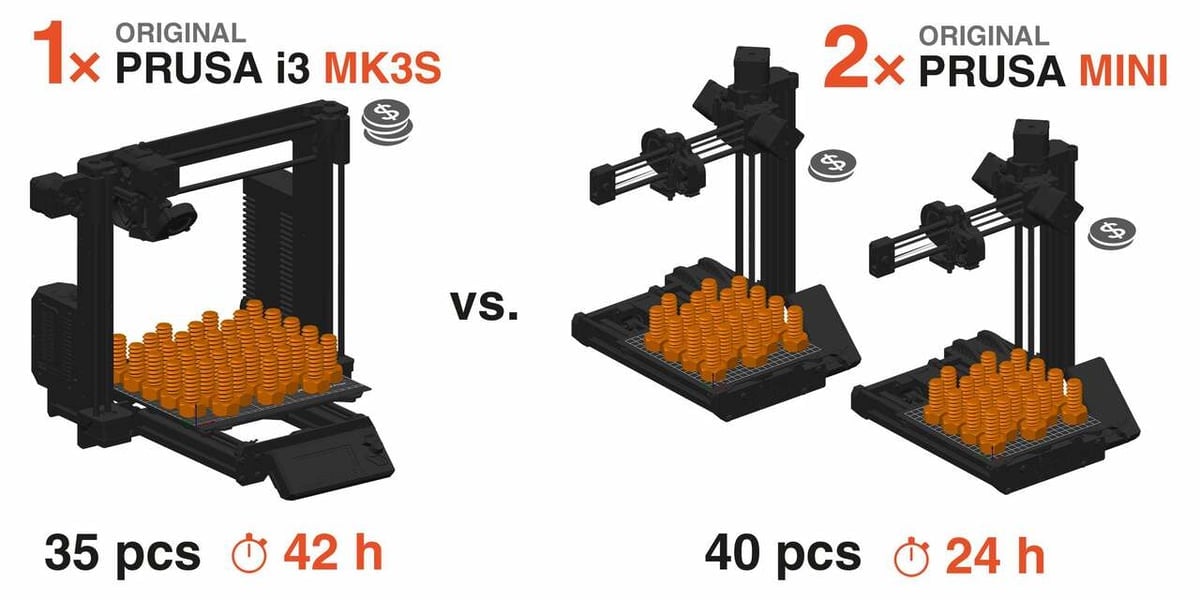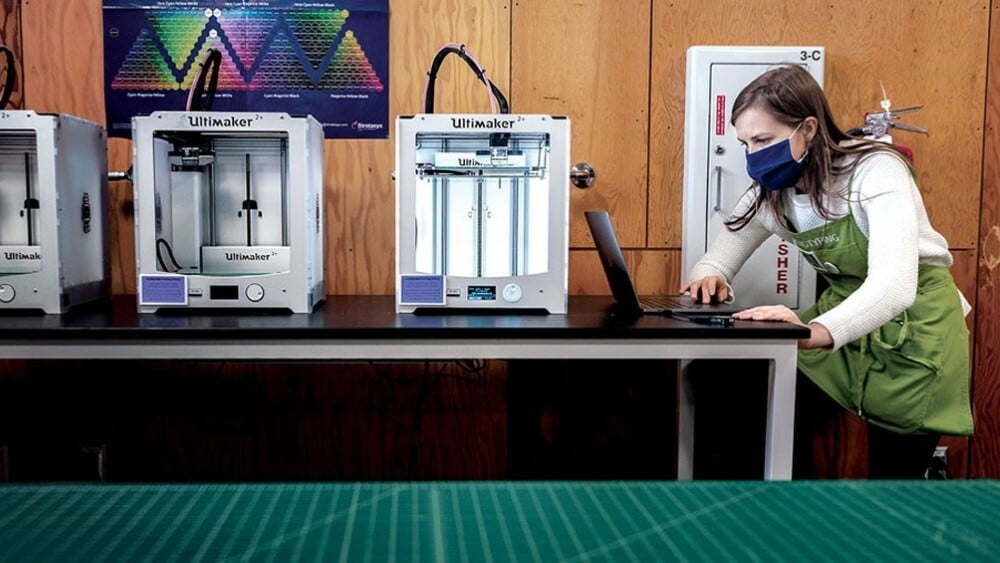The global 3D printing market is huge, valued at $16.7 billion in 2022 and growing annually at over 20%. Even a tiny slice of that pie can be a lucrative business opportunity. Much of this market may seem highly industrialized, but there are more doors open than ever for those who understand any aspect of designing and making 3D prints.
If you know your way around printing a Benchy, can design a cosplay prop, or know how to customize an existing STL, you can convert that experience into income. The opportunities range from small-scale (e.g. part-time or ad-hoc work to offset hobby printing costs) to establishing a significant business with staff and subcontractors. In this article, we explore three main areas with earning potential: contract 3D printing, professional services, and product sales and marketing.
The opportunities are there for the taking, but remember that success in this space is no different from any other commercial venture. It requires more than 3D printing and design knowledge; skills in niche market research, marketing, social media, and an understanding of at least basic business management will contribute in a huge way to how well your venture does.
Contract 3D Printing
This is the most obvious way to make money from your 3D printer. Use it to offer a low-cost manufacturing service for people who need bespoke components and parts. Despite the huge growth in large-scale 3D printing services, there are still enormous “print-on-demand” opportunities, either for customers who need parts turned around fast or those looking for a longer-term flexible manufacturing partner.
Business Model
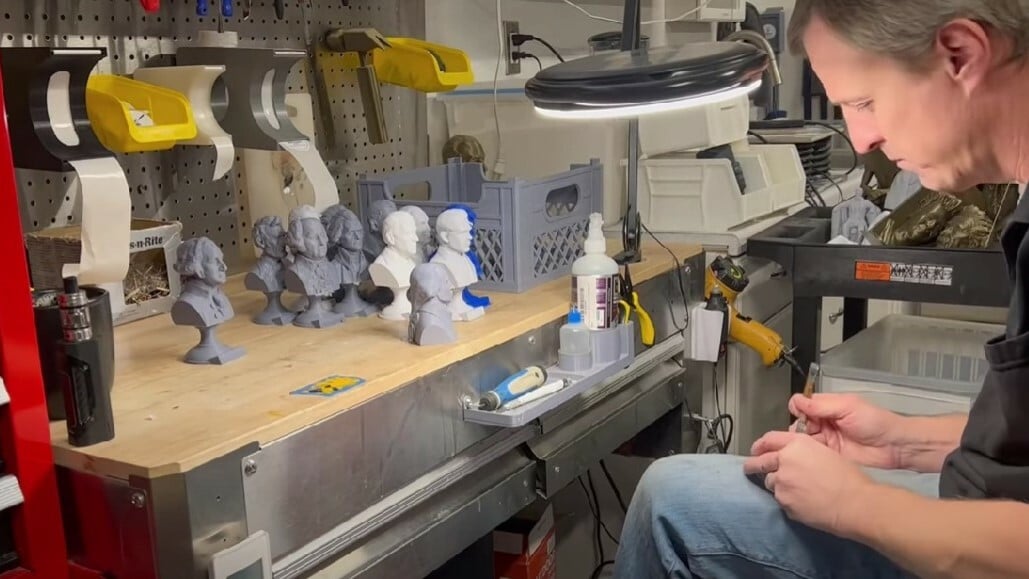
The business model goes something like this:
- A prospect contacts you with a ready-made 3D design and asks you to print it.
- You offer a price and time to complete the work.
- The customer accepts.
- You print the part(s) in the requested quantities, materials, colors, and finishes.
- You ship them the completed order.
- They pay, and you profit.
Options
The beauty of this model is that it’s scalable from a single printer to a sizeable print farm. You can also choose to occupy a niche such as printing with exotic materials (carbon-reinforced filament, for example) or in a particular sector such as jewelry or desktop-gaming pieces – which may dictate the equipment and materials you use.
You may also want to consider value-adding services such as post-processing – including smoothing, painting, or assembly – although be aware of the potentially high time commitments.
Examples
We’ve already flagged 3D printing services above, and many of these are happy to subcontract to smaller makers. You, too, can set up small-batch manufacturing at home. This video by 3DPrintedDebris will give a sense of what the experience is like to operate a print farm.
Considerations
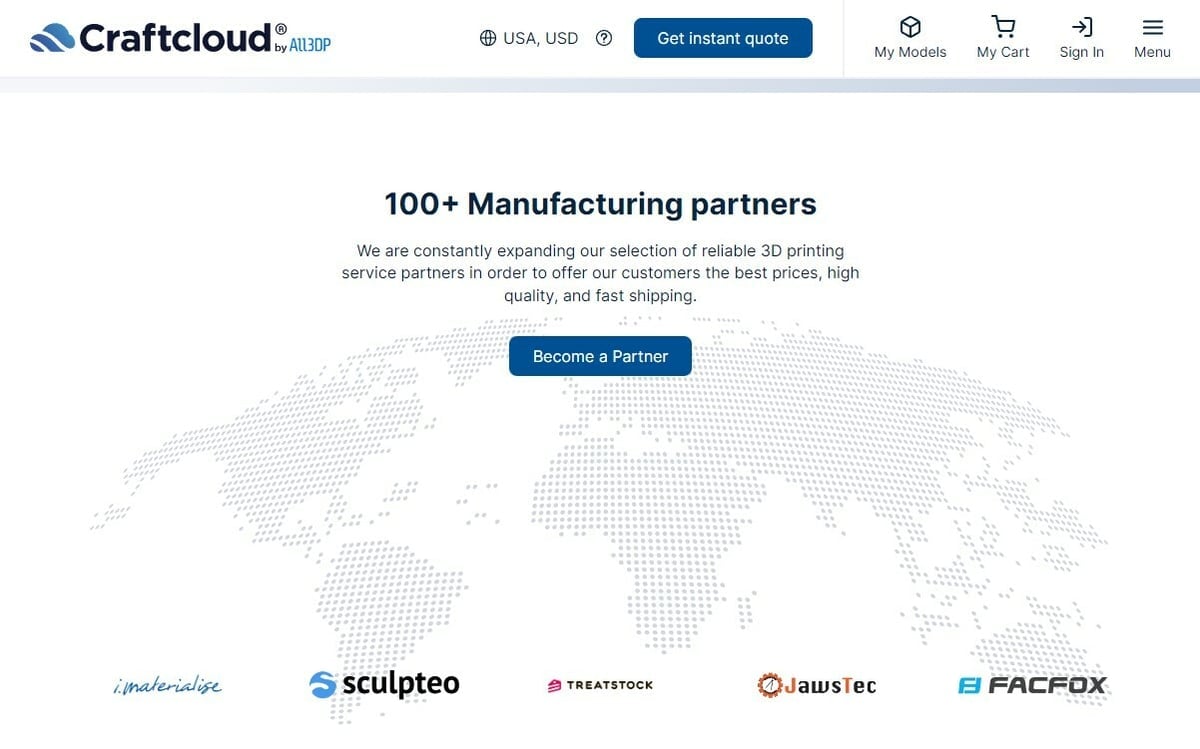
This is a simple business model, but there are a few things to bear in mind.
Finding Customers
As with any business, you have to have visibility for customers to find you. Your exact approach to marketing will depend on the scale of your business and whether you focus on a particular niche. Draw on your own network of friends, family, and any club or associations you’re a member of to get the word out. Call on local businesses if relevant too.
Social media and online channels have a huge role to play. Facebook, Reddit, Instagram, LinkedIn, TikTok, and more could all be valid channels to get your name out there. Be prepared to pay for adverts to increase your reach. For smaller-scale operations, freelancer marketplaces such as Fiverr, Upwork, and Freelancer.com are easy channels to use.
As you scale up, other dedicated 3D printing intermediaries have a role to play. You could even apply to be accepted on Craftcloud by All3DP, a 3D printing and price comparison service – if you develop a large enough capacity.
Upfront Investment & Costs
At the smaller end of the scale, take into account the cost of your 3D printer (or printers), marketing, business insurance (realistically, you’ll need this), and premises costs. If you set up at home, you’ll need to think about how this affects your home insurance and utility bills.
Also, consider consumables (e.g. material, nozzles, bed adhesives, and sheets). Initial setup could range between $1,000 and $10,000. As you scale up, there are a few decisions to make about what type of printers, supporting equipment, and software you need. For example, depending on the type of objects you print, many smaller printers may be better than a few larger, faster ones (see illustration above). You may even find printers designed for “unassisted production” worthwhile. Even for relatively small numbers, you may also find that investing in decent management software helps reduce admin overhead.
Income & Fees
When providing quotes for clients, your fees will depend on your appetite for risk, as well as certain other factors. We all know 3D printers can be temperamental beasts, so you may want to account for failed builds and wasted material in your costs. The easiest way to calculate a cost is to charge an hourly rate plus the material cost of the component. You’ll also need to account for your own time. For example, a printed part may need significant support removal or bonding if it’s a large multi-part design.
Professional Services
Your hard-won skills and expertise in every aspect of 3D printing are sellable. Perhaps you’ve developed design know-how by using CAD for parts and prototyping or by modeling in software such as Blender. Maybe you’ve learned the subtleties of 3D scanning or perfected 3D printer tuning, troubleshooting, and servicing. These skills, and more, are in short supply and valued in the marketplace.
Business Model
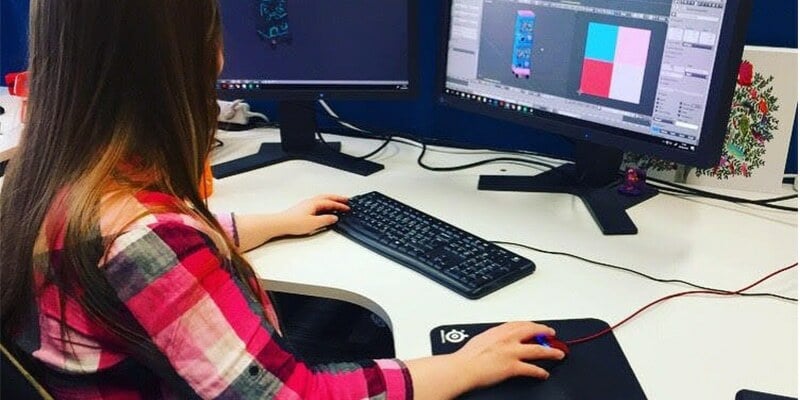
One possible business model goes something like this:
- A prospect contacts you with a requirement for an object to be designed for 3D printing – whether this is a copy of an existing part or a new functional or decorative item.
- You offer a price for your time to use a CAD or modeling program to create the final design, and optionally, arrange for a prototype to be printed.
- The customer accepts.
- Using the appropriate techniques – which may involve only design, 3D scanning, or careful measurement of an existing part – you create a digital model of the required item in a format the customer can use.
- You confirm that the design meets the customer’s needs, which may involve a couple of iterations and even printing a prototype.
- You send the completed design, with optional rendering or a physical print, to the customer along with an invoice.
- They pay, and you make a profit.
Options
There are many variations on the above theme. Most customers with a design need will be content with a finished STL or 3MF file, while others will want more detailed documentation and source CAD files. You may be able to work remotely, or you might need to be onsite for part or most of the time. The option of printing a prototype, or even one-off finished item, might also be valued by the customer, but mainly, it’s your expertise that is being bought in this business model.
Another growing area of 3D professional services involves hands-on support. Schools, businesses, and architects’ offices, among many other types of businesses, often invest in 3D printers but not in the ability to use them effectively or look after them. Advisory and maintenance services in this space are becoming common and are well suited to ad-hoc and part-time work.
The bottom line is that time spent using your experience is a great potential source of income.
Examples
A quick search through Fiverr will highlight many hundreds of individuals from across the globe who are selling their professional services as a designer of 3D models for printing. Also, it’s worth noting that many of today’s established 3D printer parts and service companies began as hobbyists sharing their expertise commercially with others, and grew from there. E3D is a great example.
Considerations

Many of the general considerations are the same as for contract 3D printing, but there are a few key differences.
Finding Customers
Looking first at design-oriented professional services, we can see that there’s a growing amount of work out there, and it’s a fairly competitive space. The use of freelancing services such as Fiverr can work very well, but as a new entrant, you may have to think about other ways to highlight what you are capable of.
Gaining visibility through social media as well as interactions on Reddit, Discord, and other such channels can be useful. Choosing a particular niche can make it easier to focus on particular internet or local groups sharing the same interest. The more “hands-on” the professional services, the more local marketing and visibility become important. Very often, direct contact with local schools and colleges, engineering firms, and other businesses pays dividends.
Upfront Investment & Costs
It’s likely that you’re qualified to offer services in this space if you already have appropriate CAD software, scanning equipment, or tools. If you’ve been using CAD tools under a hobbyist license, you may need to consider the cost of a full license. You should also consider appropriate insurance – in particular, if there is any potential liability around the use of your designs. Remember that online services, such as Fiverr, will incur charges or commissions, and you should also include appropriate costs for activities that involve travel.
Income & Fees
Generally, customers will be looking for a fixed-price quote from you, including all fees and any risk of overrunning being absorbed by you. Bear in mind that some work may require a few iterations, so be clear on how you wish to handle this.
If you have an established reputation, it may be easier to quote a day or hourly rate – charging on a “time and materials” basis. Charges associated with professional services vary enormously both locally and online. You may first need to establish a name for yourself by pitching in low initially until your reputation for quality and service is established.
Product Sales & Marketing
If you find the right product and market space, this business model can be the most lucrative. 3D printed products are no longer seen as a novelty or curiosity, and growing acceptance has expanded the market considerably. Your product need not even be a physical object, as 3D printing hobbyists are also prepared to pay for a great and unique STL design.
At the other extreme, you don’t even have to do your own detailed designs but can contract someone as outlined in the contract 3D printing model above. The availability of reliable 3D contract printing means that you don’t necessarily have to do your own manufacturing. A viable option is to outsource it, which may be especially important if your product is seasonal.
Business Model

Typically the model works as follows:
- You brainstorm and research concepts for products that you think people have a need or a desire for. (Hint: the most successful are usually in areas you know and are interested in.)
- You design (or have designed) one or more prototype options.
- You test and validate your prototypes with a friendly audience and iterate the design as appropriate.
- You choose the best channels to market your product.
- You spend time promoting and showcasing your product to get it in front of as many eyes as possible.
- People buy your products, and you profit!
Options
We’ve seen already that selling your own designs as an end product is a valid model. For the sale of physical products, options to consider include focusing on fields such as ceramics, jewelry, or even molds for casting, among other ideas.
Generally, products that aren’t readily available in the mass market but have a large potential market sell well, especially those connected to hobbies (e.g. car modding, desktop gaming, cosplay, fishing, and so on). Products that can be customized with names, dates, or colors also do well.
Finally, don’t shy from products that require assembly – for example, the addition of lighting, as these often are critical differentiators.
Examples
Who could be a better example of this model than Josef Prusa himself. He’s designed and used 3D printed components in the production of his printers from the very beginning!
Another great example is Printable Scenery, an online shop that designs and sells 3D models for tabletop games. Their website is full of exquisitely designed scenes and miniatures for game enthusiasts, and they even provide guidance on printing and finishing prints of their models.
There are a lot of makers out there selling their work. A quick Google search on “3D printed gifts for sale” will highlight many hundreds of successful sellers online.
Considerations

As with the previous venture models, there are additional aspects to consider.
Finding Customers
This model obviously requires a heavy focus on sales and marketing. Depending on your product, this may be mainly through digital channels, including social media, visibility through forums, and mentions in established YouTube and other channels. Sales and marketing may also include more traditional methods such as physical presence at trade and maker fairs, networking events, markets, and even approaching merchants to sell your products on your behalf.
Online sales channels such as Etsy and Shopify (or Cults for design sellers) work well for many, although the use of these needs to be carefully costed. Word of mouth often works well for these products, so encourage customers to help with your marketing efforts.
Upfront Investment & Costs
As noted above, the market for contract printing and outsourced design services is such that you don’t even need to design and produce your own products. In some cases, this can be the most economical approach. Alternatively, you can design and print in-house, but you’ll need to budget for overhead costs such as software and printers in order to establish your business. Also, bear in mind that the proportion of advertising, marketing, and sales channel costs is likely to be much higher.
Another consideration is packaging and shipping costs (including time), especially for those reaching out to international markets where extra postage, tax considerations, exchange rate, and transaction fees can destroy an otherwise sound business case. Two final thoughts to bear in mind include budgeting for the overhead of customer services; inevitably, you’ll have returns, complaints, lost shipping, and so on. Also, discount codes work! So budget for that too.
Income & Fees
The price of your product should be such that it can still sell after taking into account all of the above. Test the market: What you have to offer may be worth more than you first imagine.
License: The text of "3 Great 3D Printing Business Ideas to Start Your Own" by All3DP is licensed under a Creative Commons Attribution 4.0 International License.


